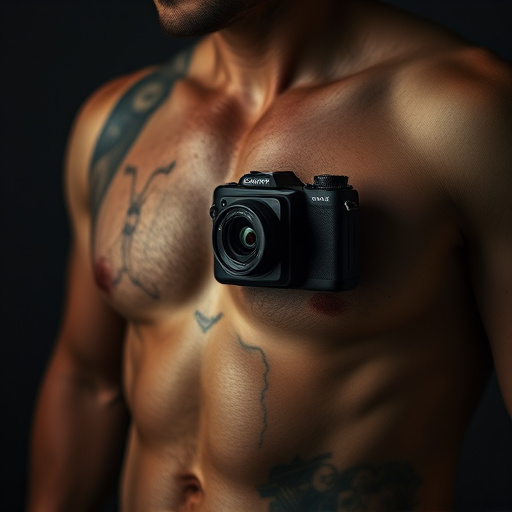Hidden personal body cameras have gained popularity for their compact design, advanced features, and discreet operation. They offer high-quality video and image capture, flashlights for low-light conditions, and enhanced security in various scenarios. However, their use raises privacy concerns, making it crucial to understand local laws, obtain explicit consent, and deploy them responsibly for legitimate purposes like self-defense or professional security.
Uncover the power of self-protection with a hidden personal body camera—a discreet device that captures critical moments. This comprehensive guide, “Understanding Hidden Personal Body Cameras: A Comprehensive Overview,” explores the key features and benefits of flashlight-integrated designs, offering insights into legal considerations and privacy concerns. Learn best practices for using these powerful tools, ensuring safety and peace of mind in today’s world. Discover why hidden personal body cameras are a game-changer for individual protection.
Understanding Hidden Personal Body Cameras: A Comprehensive Overview
Hidden personal body cameras, also known as wearable surveillance devices, have gained significant popularity in recent years. These compact and discreet cameras are designed to be worn on an individual’s person, offering a unique perspective and enhanced safety measures. With their small size and advanced features, they can easily fit into pockets or attach to clothing, allowing users to capture high-quality video and images without drawing attention.
This innovative technology provides individuals with a sense of empowerment and security in various situations. Whether for personal use, such as during outdoor activities or travel, or for professional purposes like law enforcement and first responders, hidden body cameras offer an extra layer of protection. Their built-in flashlights add to their versatility, enabling users to navigate dimly lit environments with ease. By capturing real-time footage, these devices serve as reliable witnesses in case of any unforeseen events, making them invaluable tools for personal safety and security.
Key Features and Benefits of a Flashlight-Integrated Design
A key advantage of hidden personal body cameras with integrated flashlights is their versatility in low-light conditions. These devices combine the functionality of a high-quality camera with the reliable illumination provided by a flashlight, enabling users to capture clear and detailed footage even in dark or poorly lit environments. This feature is particularly useful for law enforcement officers, security personnel, and individuals who engage in outdoor activities at night, ensuring they have evidence-grade video and light when it matters most.
Additionally, the hidden design of these cameras offers a discreet presence, allowing users to capture unawares moments without drawing attention. The flashlight serves as a subtle indicator when activated, providing illumination for situations where visibility is limited. This dual functionality not only enhances safety and security but also promotes peace of mind, knowing that critical incidents can be documented with precision and clarity.
Legal Considerations and Privacy Concerns: What You Need to Know
When considering the use of a hidden personal body camera, it’s crucial to understand the legal landscape surrounding this technology. Privacy laws and regulations vary significantly across jurisdictions, so it’s essential to research and comply with local rules. In many places, capturing video or audio without consent is illegal, especially in private spaces. Body cameras that are visible can deter their use in situations where privacy and consent are paramount, such as medical settings or confidential conversations.
However, hidden personal body cameras equipped with flashlights offer unique advantages for safety and security purposes. Users rely on the element of surprise to capture incidents accurately while preserving potential evidence. Yet, this raises significant privacy concerns. It’s vital to disclose the presence of a camera—even if it’s concealed—to those being recorded whenever possible. Maintaining transparency ensures ethical use and can mitigate legal repercussions. Additionally, regularly reviewing and securely storing recordings is essential to protect individuals’ rights and privacy.
Best Practices for Using a Hidden Personal Body Camera
When using a hidden personal body camera, it’s crucial to balance privacy and safety with responsible usage. Always ensure clear consent from all individuals being recorded, especially in public spaces, respecting their right to privacy. Documenting interactions should be for legitimate purposes, such as self-defense, evidence in case of an incident, or for professional security roles like law enforcement or private security details.
Regularly review and manage your footage responsibly. Store recordings securely and erase unnecessary data to protect sensitive information. In addition, familiarize yourself with local laws and regulations regarding body-worn cameras to ensure compliance and avoid potential legal issues. Use the camera’s flashlight judiciously, only when necessary for clarity in low light conditions, preserving battery life for extended use.
